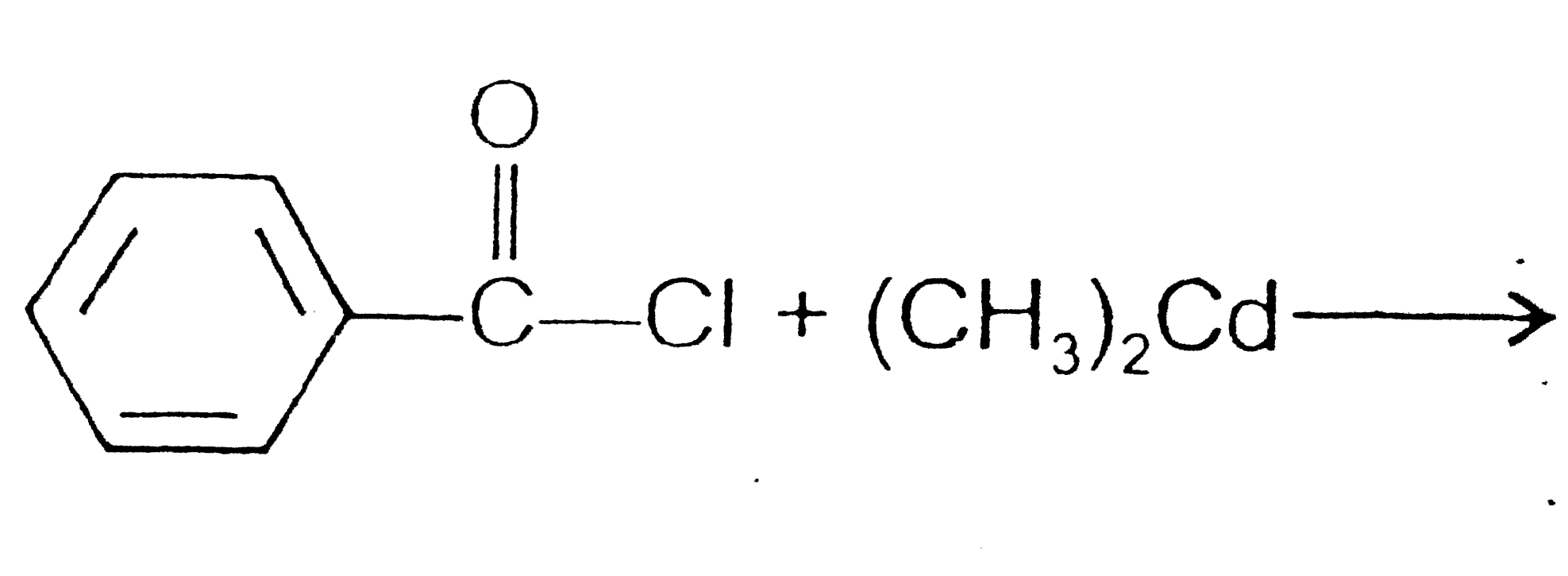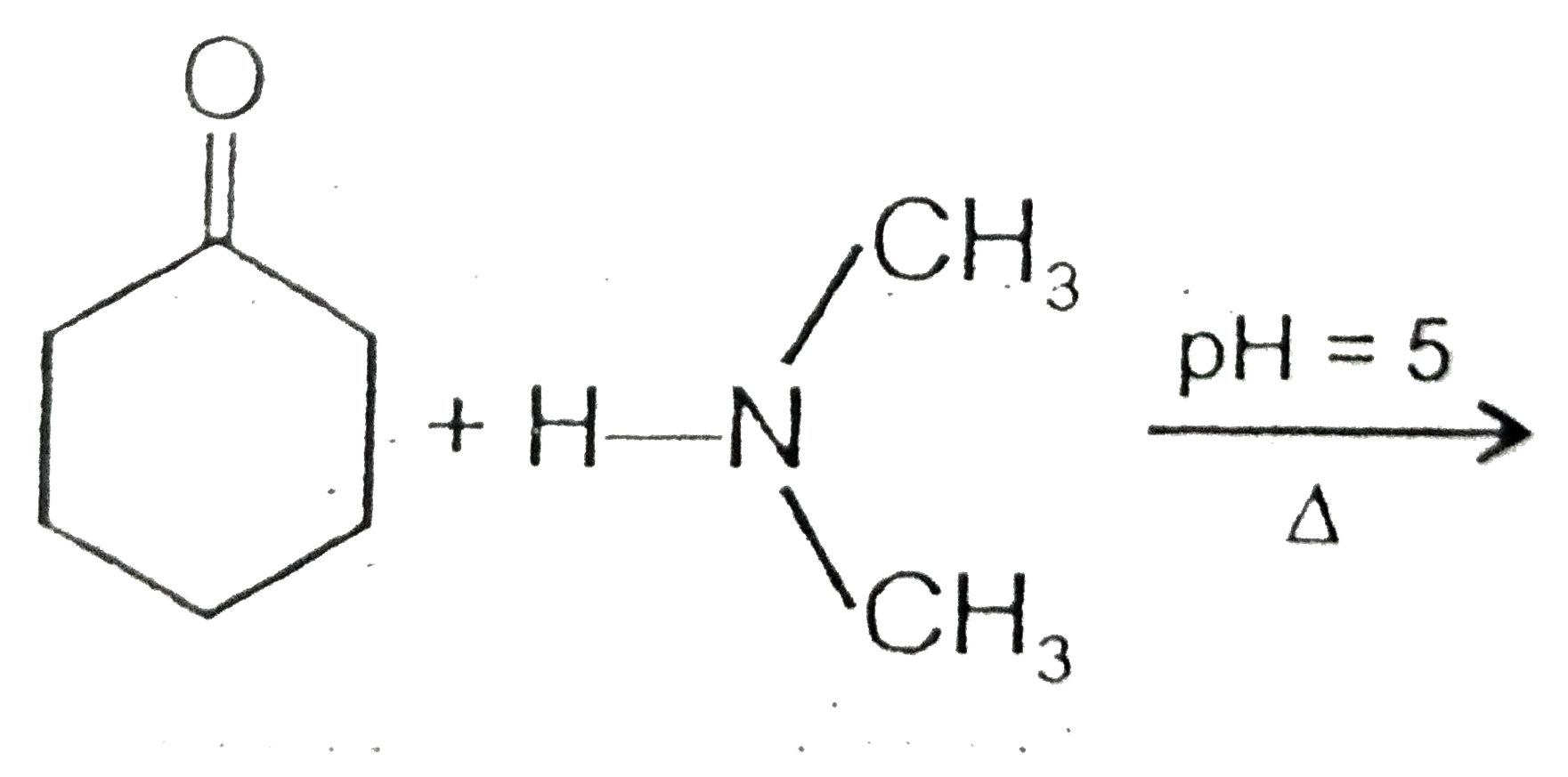Identify the (X), (Y), and (Z) in the following reactions
PhCH2Br+CH3−O∣∣C−CH3(i) Ph3P−−−−−→(ii) :BΘ(X)
To solve the problem, we need to identify the compounds (X), (Y), and (Z) in the given reactions involving phenyl bromide (PhCH₂Br), acetone (CH₃C(=O)CH₃), and the reagents triphenylphosphine (Ph₃P) and a base.
1. Identify the Reactants:
- The first reactant is phenyl bromide (PhCH₂Br), which contains a phenyl group (Ph) attached to a bromomethyl group (CH₂Br).
- The second reactant is acetone (CH₃C(=O)CH₃), which is a ketone.
2. Reaction with Triphenylphosphine:
- Triphenylphosphine (Ph₃P) acts as a nucleophile. It will attack the electrophilic carbon in phenyl bromide.
- The reaction leads to the formation of a phosphonium salt. The bromine atom (Br) leaves, and we form a compound (Y) which is PhCH₂P(Ph)₃⁺.
3. Deprotonation:
- A base is used to deprotonate the phosphonium salt. The acidic hydrogen on the CH₂ group is removed, resulting in a neutral compound (Z), which is PhCH=PH(Ph)₂.
4. Wittig Reaction:
- The neutral compound (Z) then reacts with acetone. The negative charge on the alkyl group of (Z) attacks the electrophilic carbon of the carbonyl group in acetone.
- This forms a cyclic transition state, which rearranges to yield an alkene (X).
5. Final Product (X):
- The final product (X) is the alkene formed from the reaction of the neutral compound (Z) with acetone. The structure of (X) is PhCH=CH(CH₃)₂, which is an alkene.
Summary of Compounds:
- (X) = PhCH=CH(CH₃)₂ (an alkene)
- (Y) = PhCH₂P(Ph)₃⁺ (phosphonium salt)
- (Z) = PhCH=PH(Ph)₂ (neutral compound after deprotonation)
- The first reactant is phenyl bromide (PhCH₂Br), which contains a phenyl group (Ph) attached to a bromomethyl group (CH₂Br).
- The second reactant is acetone (CH₃C(=O)CH₃), which is a ketone.
- Triphenylphosphine (Ph₃P) acts as a nucleophile. It will attack the electrophilic carbon in phenyl bromide.
- The reaction leads to the formation of a phosphonium salt. The bromine atom (Br) leaves, and we form a compound (Y) which is PhCH₂P(Ph)₃⁺.
- A base is used to deprotonate the phosphonium salt. The acidic hydrogen on the CH₂ group is removed, resulting in a neutral compound (Z), which is PhCH=PH(Ph)₂.
- The neutral compound (Z) then reacts with acetone. The negative charge on the alkyl group of (Z) attacks the electrophilic carbon of the carbonyl group in acetone.
- This forms a cyclic transition state, which rearranges to yield an alkene (X).
- The final product (X) is the alkene formed from the reaction of the neutral compound (Z) with acetone. The structure of (X) is PhCH=CH(CH₃)₂, which is an alkene.
- (X) = PhCH=CH(CH₃)₂ (an alkene)
- (Y) = PhCH₂P(Ph)₃⁺ (phosphonium salt)
- (Z) = PhCH=PH(Ph)₂ (neutral compound after deprotonation)
Topper's Solved these Questions
- BOOK - MOTIONCHAPTER - HYDROCARBON EXERCISE - QUESTIONS6videos
HYDROCARBON
- BOOK - MOTIONCHAPTER - HYDROCARBON EXERCISE - Exercise - 185videos
HYDROCARBON
- BOOK - MOTIONCHAPTER - GRIGNARD REAGENTEXERCISE - EXERCISE-216videos
GRIGNARD REAGENT
- BOOK - MOTIONCHAPTER - IONIC EQUILIBRUIMEXERCISE - Exercise -4 (Level -II)14videos
IONIC EQUILIBRUIM
Similar Questions
Knowledge Check
- Question 1 - Select One
In the given reaction
C6H5−O∣∣C−CH3(i). Br2/KOH−−−−−−−−−−→(ii). H⊕CHBr3+[X]
[X] will be:AC6H5−CHOBC6H5COOHCC6H5−CH2OHDCH3COOH - Question 2 - Select One
PhCH2−O∣∣C−Cl+CH3CH2SH→X,X is
APh−O∣∣C−S−CH∣CH3−CH3BPh−CH2−O∣∣C−S−CH2−CH3CCH3−CH2−CH2−O∣∣C−S−PhDCH3−CH∣CH3−O∣∣C−S−Ph
Complete the following reactions:
CH3−CH3∣CH−COOH(i)Br2/Red P4−−−−−−−−−→(ii)H2OView SolutionIdentify the product of the following reaction:
CH3−CH3∣C∣CH3−CH2−BrEtOH−−−→ΔView SolutionIdentify (X) in the following reaction
CH3−C∣OHH−CH2−O∣∣CHLiAlH4−−−→XView SolutionPredict the products of the following reactions
(a)
(b) CH3−O∣∣C−CH3(i)CH3MgBr−−−−−−−−→(ii)H3O+
(c ) View Solution
View SolutionComplete the following reactions:
(i) CH3−CH2−O−CH3| C | CH3−CH3−HIHeat−−→
View SolutionIdentify the products (x, y) of following reaction : -
CH3−CH3∣C=CHCH3∣C∣CH3−CH3O3/H2O,Zn−−−−−−−→(X)+(Y)View Solution

